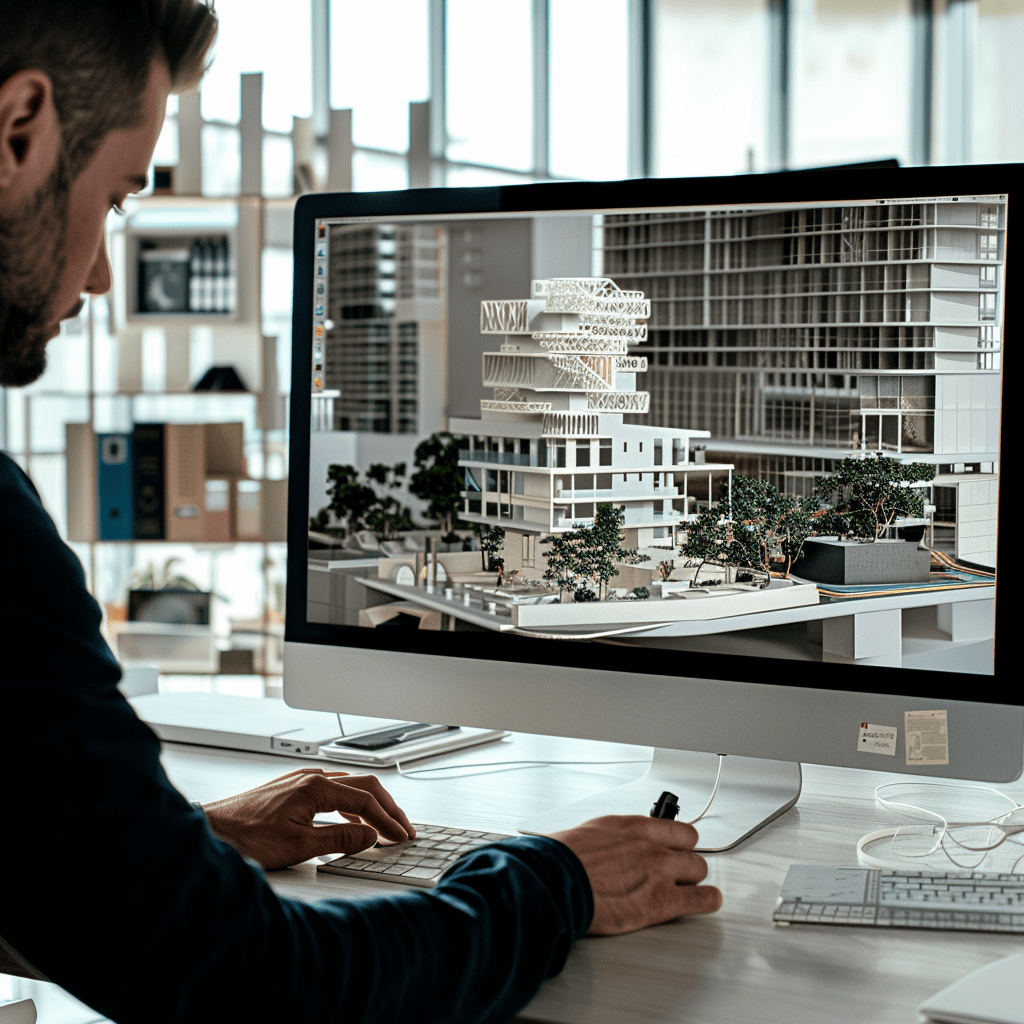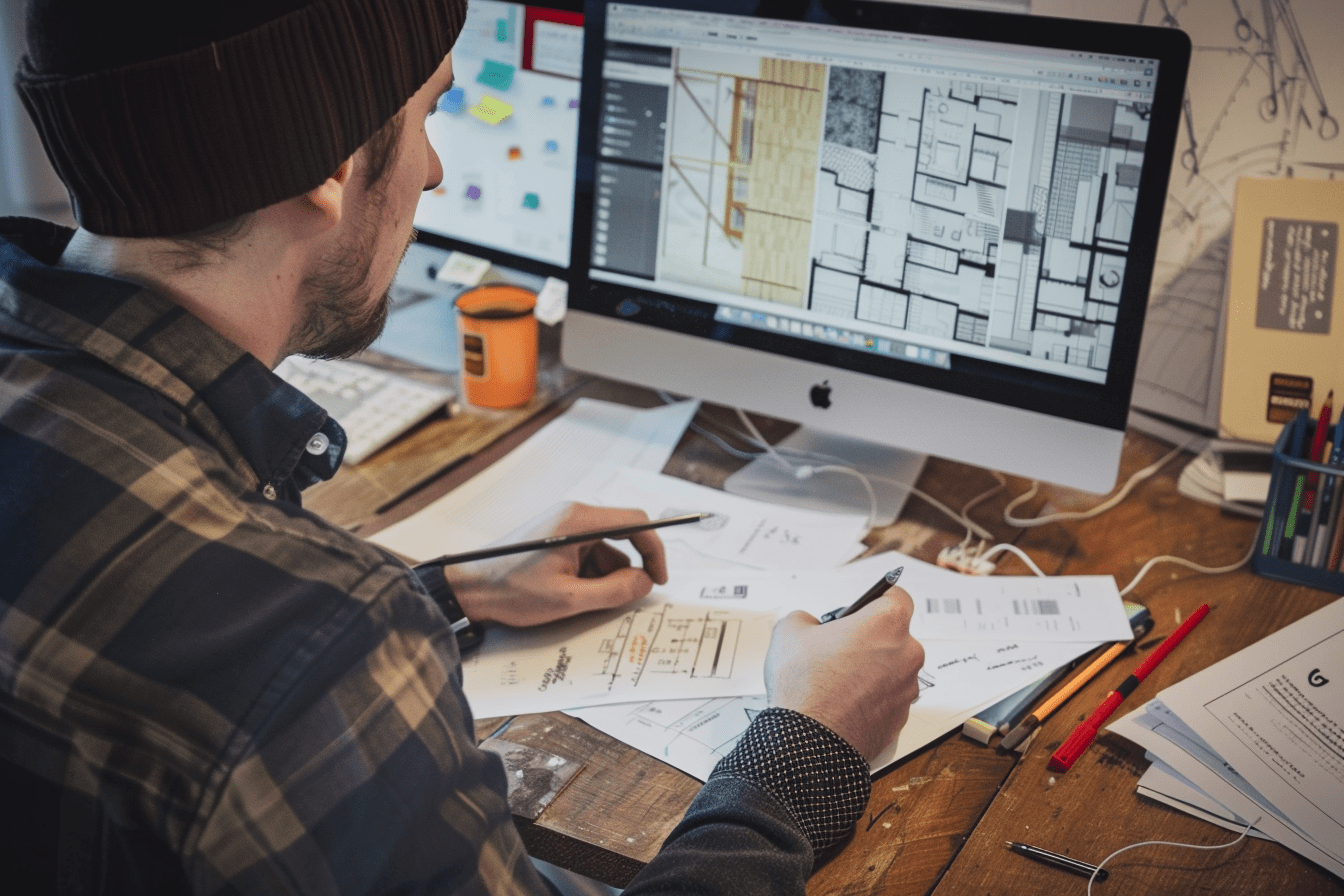In the ever-evolving world of architecture, we’re seeing a significant rise in the number of professionals choosing the freelance route. It’s no surprise, considering the flexibility and potential for higher earnings it offers. However, navigating the freelance landscape can be a daunting task, especially when it comes to maximizing income. That’s where our guide to the freelancers framework comes in handy.
Our guide is designed to provide you with a roadmap to success in your freelance architecture career. We’ll delve into strategies for setting competitive rates, finding lucrative projects, and marketing your services effectively. Let’s unravel the secrets to earning more as a freelance architect and set you on a path to financial freedom.

Setting Up Your Freelance Architecture Business
Establishing a freelance architecture business can be a rewarding endeavor, affording you not only financial gains but also the freedom to pursue projects you are genuinely passionate about. Here, we’ll guide you through key steps for getting your business off the ground and maximizing your earning potential with strategically selected gigs.
First and foremost, always set competitive rates. It’s crucial to do your homework. Researching average pay rates for freelance architects can help you create a benchmark for your charges. It’s also important to factor in your overhead costs and personal financial needs when deciding on your rate. Remember, in building a successful freelance business, quality should take precedence over quantity.
Next, project selection plays a significant role. Look for profitable gigs that align with your expertise and professional interests to maximize your earning potential. This can include high-end residential projects, commercial projects, or even urban design initiatives.
As for marketing, this is where social media content creating becomes highly beneficial. One of the most powerful tools a freelance architect has at their disposal is a well-curated portfolio showcasing their work. Social media platforms such as Instagram and LinkedIn have transformed into vital tools, helping architects engage with potential clients across the globe. It’s vital to create compelling, high-quality content that showcases your unique design aesthetics and professional capabilities.
In managing these key areas effectively, you stand to elevate the profitability of your freelance architecture venture. Though it may seem like a daunting endeavor, once you get the hang of it, you’ll find yourself relishing the flexibility and independence that comes with running your own business. Proceed deliberately and strategically, and always remain open to refining your strategy as you go along.

Building Your Portfolio
Crafting a professional portfolio that accurately represents your skills and experience is a crucial step in setting up your freelance architecture business. An impressive portfolio is not just visually appealing but demonstrates your expertise, creativity, and problem-solving capabilities. It’s a window through which potential clients can see your ability to transform ideas into concrete designs.
Showcasing Your Best Work
The first step in portfolio creation is artfully showcasing your best work. This includes projects that were not only successful but also challenging, as they demonstrate your problem-solving skills and adaptability.
Ensure you provide:
- Detailed descriptions of each project’s challenge and your approach to solving it
- High-quality images capturing various aspects of the project
- Testimonials from clients validating your role and competency in the project
Where possible, even subtly incorporate the relevance of social media content creating within the portfolio’s context. This can be in terms of highlighting the gained imperative exposure and inherent value it introduced to your completed projects.
Highlighting Your Unique Selling Proposition
Every architect has their own unique style – a signature touch that sets them apart from others. Your unique selling proposition (USP) could be a particular design style, an innovative approach to sustainability, unmatched efficiency in project delivery, or any numerous distinct elements that speak to your strengths.
In order to emphasize your USP within your portfolio:
- Consistently showcase it throughout different projects
- Explicitly highlight it in your project descriptions
- Use quotes or testimonials from clients that emphasize your USP
Remember, it’s essential to keep updating your portfolio as you complete new projects to maintain its relevancy and vibrancy. This will illustrate to potential clients that you’re actively engaged in the industry, constantly innovating and improving upon your skills. It also provides an opportunity for them to gauge if your skills and style align with their project needs.

Marketing Your Services
In the digital era, marketing has become a vital aspect for freelancers to set themselves apart. Let’s delve into how we, as freelance architects, can market our services effectively.
Creating a Strong Online Presence
In today’s world, having a solid online presence is non-negotiable. Your online presence is an extension of your professional portfolio. Clients will look you up on the internet, and your online presence (or lack thereof) may be a deal-breaker.
One way to build an online presence is by staying active on social media platforms. Use platforms like Instagram, Pinterest, LinkedIn, and Twitter, where your target audience hangs out. Social media content creation shouldn’t be an afterthought. It’s an essential tool in your marketing strategy. Share behind-the-scenes photos, 3D renderings, blueprints, and progress shots of your ongoing projects. Your potential clients will appreciate seeing your work process, and not just your portfolio’s polished final images.
Furthermore, blog posts can effectively showcase your knowledge, skills, and insight into the architectural industry. Write about trends, share your unique views, and comment on relevant issues.
Also, remember to use SEO to your advantage. It’ll help potential clients find you in online searches. Be sure to optimize your content with relevant keywords that reflect your specialty and the services you offer.
Just as your portfolio needs to be regularly updated, so does your online presence. This demonstrates an ongoing commitment to your work and the industry. It’s a reassurance for potential clients that you’re both active and up to date.
Networking with Potential Clients
Networking plays a crucial role in attracting potential clients. Strive to build a broad yet targeted network by attending conferences, seminars, and workshops. Participating in local community meetings can also yield fruitful results. Always ensure you have a compelling elevator pitch ready to tell your story in a succinct, intriguing manner.
Digital networking is equally essential. LinkedIn is a great place to connect with potential clients and join relevant industry groups. Participating in online forums and communities can also establish you as an expert in your field. Be sure to contribute valuable insights and solutions in your network, thereby building a reputation as a helpful and knowledgeable professional.
Lastly, do not underestimate the power of word-of-mouth referrals. Staying in touch with past clients encourages them to refer you to their network. Always provide top-notch service that goes above and beyond clients’ expectations, and you’ll naturally get more referrals.
Remember, it’s not just about finding new clients — it’s about finding the right clients, ones that match your style, your pace, and your professional values.
Applying these strategies will surely set you on the path of establishing a strong online presence and network, which are the backbone of marketing your services as a freelance architect.

Pricing Your Architecture Services
As we delve deeper into the world of freelance architecture, another paramount aspect to consider is the art of appropriately pricing your services. It’s a realm where caution and consideration are key, aligning expertise, experience, and value.
In the architecture profession, underpricing or overpricing can both pose significant risks. Underpricing your services may attract clients – but it could also undervalue your skills, set a precedent for future rates, and create difficulty in asking for higher fees in the future. Overpricing, on the other hand, might deter prospective clients, even if your experience and expertise warrant higher rates.
Of course, when setting a price, it’s crucial to have a thorough understanding of the current market rates for similar services. Here, we need to take into account several variables:
- Experience Level: The amount of professional experience you bring to a project directly impacts what clients are willing to pay.
- Nature of the Project: The scale, complexity, and required timeline of the project influence the price.
- Geographic Location: The city, state or even country where you operate or where your client is based can affect pricing due to different living costs and market rates.
To help gauge current market rates, consider online surveys, discussions on architecture forums, or insights from architecture bodies.
While social media content creating isn’t directly tied to pricing, it indirectly affects how clients perceive your value. High-quality, insightful content on platforms like Instagram or LinkedIn shows you’re more than just a professional behind a drafting table. You’re an architect who stays updated on industry trends, shares valuable insights and engages with their audience. This increased perceived value can allow you to charge premium rates.
Networking both online and offline plays a large part in pricing as well. Interacting with colleagues, clients, and competitors can provide invaluable information on market trends, pricing standards, and client expectations.
In aiming for a reasonable yet advantageous price point, balance is essential. This delicate balance goes beyond the simple cost-plus method or market-based pricing. It’s about finding where quality, value, and client expectations meet.

Conclusion
Let’s now navigate the unprecedented waters of the social media landscape. It’s not just about posting captivating images or bookmark-worthy articles anymore. Rather, it’s about creating an engaging, dynamic experience that tells a story—your story as a freelance architect. Just as we’ve discussed, high-quality social media content can dramatically enhance one’s perceived value and consequently, the rates they can charge.
We might question, “Is it really worth investing so much time and energy into social media content creation?” Yes, it is, and here’s why. Social media platforms are more than just digital spaces. They’ve evolved into expansive networks where professionals cultivate relationships, share ideas, showcase their expertise, and negotiate business deals.
As freelance architects, we need to harness these platforms to display our work, share our philosophy, and interact with potential clients and other professionals in our field. In essence, our social media output becomes an extension of our portfolio.
That said, maintaining an active presence on social media doesn’t mean we are required to post every day. Rather, aim for consistency and focus on delivering quality. This might take the form of sharing:
- Project snapshots to illustrate your design process.
- Completed projects to showcase your capabilities.
- Inspirational content that shapes your design philosophy.

Remember, the social media landscape is ever-evolving. As we adapt to these shifts and stay true to our unique architectural style, we will begin to see how social media, with its inherent ability to connect people and ideas, can significantly impact our professional trajectory as a freelancer. Through carefully curated content and thoughtful engagement, potential clients and collaborators worldwide can begin to see, appreciate, and value our work.
Our pricing architecture is not solely dependent on prevailing market rates or even our desired income. It is strongly influenced by our value proposition as reflected in our portfolio, our levels of expertise and experience, and the unique value we add to projects. And social media content creating is an indispensable tool in building that value proposition. In the realm of freelance architecture, the maxim ‘perception is reality’ has never been more true. And with the power of social media, we can consciously mold that perception to our advantage.








